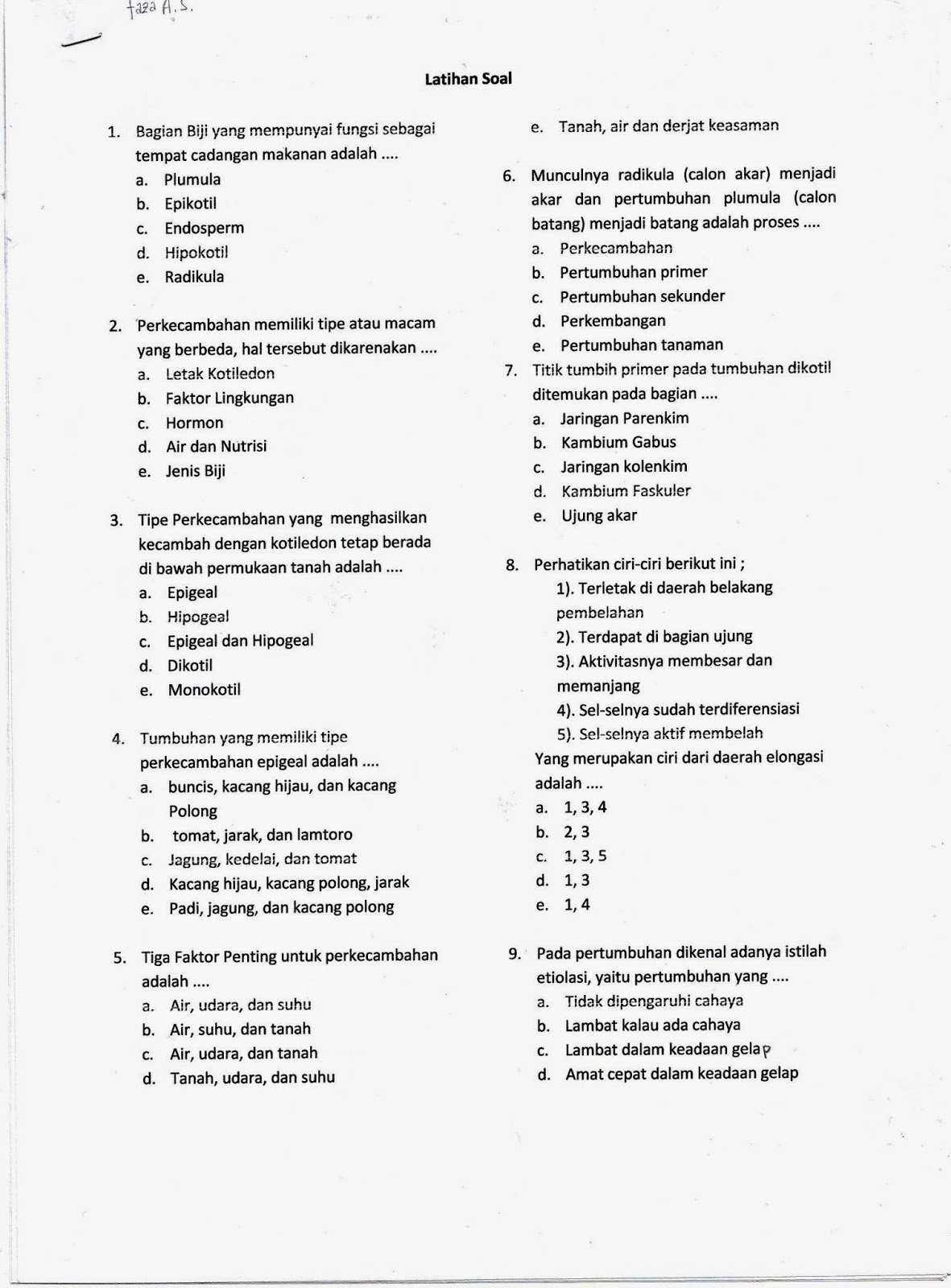Senin, 01 Desember 2014
Rabu, 15 Oktober 2014
Sabtu, 27 September 2014
Senin, 22 September 2014
Kamis, 18 September 2014
Minggu, 17 Agustus 2014
Rabu, 06 Agustus 2014
Senin, 21 Juli 2014
Rabu, 02 April 2014
Senin, 31 Maret 2014
Senin, 17 Maret 2014
Senin, 03 Maret 2014
Minggu, 02 Februari 2014
Respiratory System(•̀ᴗ•́)و ̑̑
*). Respiratory Tract (Saluran Pernapasan) :
1. Rongga Hidung
2. Mulut
3. Larynx
4. Farynx
5. Epiglotis
6. Trakea
7. Bronkus
8. Bronkiolus
9. Alveolus
*). Mekanisme Pernapasan :
1. Inspirasi
2. Ekspirasi
*). Pernapasan :
1. Dada
2. Perut
*). Components of the Upper Respiratory Tract :
*). Upper Respiratory Tract Functions :
*). Lower Respiratory Tract Functions :
*). Respiratory Cycle :
*). Measurement of Lung Capacity :
*). Regulation of Breathing :
*). Regulation of Breathing :
1. Rongga Hidung
2. Mulut
3. Larynx
4. Farynx
5. Epiglotis
6. Trakea
7. Bronkus
8. Bronkiolus
9. Alveolus
*). Mekanisme Pernapasan :
1. Inspirasi
2. Ekspirasi
*). Pernapasan :
1. Dada
2. Perut
_Human Biology_
Chapter 10 :
Respiratory System :
Exchange of Gases
*). Human Respiratory System :
*). Components of the Upper Respiratory Tract :
*). Upper Respiratory Tract Functions :
- Passageway for respiration
- Receptors for smell
- Filters incoming air to filter larger foreign material
- Moistens and warms incoming air
- Resonating chambers for voice
*). Components of the Lower Respiratory Tract :
*). Lower Respiratory Tract Functions :
- Larynx : maintains an open airway, routes food and air appropriately, assists in sound production
- Trachea : transports air to and from lungs
- Bronchi : branch into lungs
- Lungs : transport air to alveoli for gas exchange
Gas Exchange Between The Blood and Alveoli :
*). Respiratory Cycle :
*). Measurement of Lung Capacity :
*). Regulation of Breathing :
*). Regulation of Breathing :
Nervous System Involvement
- Carotid and aortic bodies : sensitive to carbon dioxide, pH, and oxygen levels
- Conscious control : resides in higher brain centers; ability to modify breath is limited
*). Disorders of Respiratory System :
- Reduced air flow : asthma, emphysema, bronchitis
- Infections : pneumonia, tuberculosis, botulism
- Lung cancer
- Congestive heart failure
- Cystic fibrosis
*). Breathing Disorders :
- One breathing disorder :
Asthma or Bronchitis
- One possible cause
- Prevention
- Treatment
*). Process of Breathing : Pressure Gradient
- Inspiration/Expiration : air in/air out
- Cycle :
+ Relaxed state : diaphragm and intercostal muscles relaxed
+ Inspiration : diaphragm contracts, pulling muscle down, intercostal muscles contract elevating chest wall and expanding volume of chest, lowering pressure in lungs, pulling in air
+ Expiration : muscles relax, diaphragm resumes dome shape, intercostal muscles allow chest to lower resulting in increase of pressure in chest and expulsion of air
*). Measurement of Lung Function :
- Lung volumes and vital capacity :
+ Tidal volume : volume of air inhaled and exhaled in a single breath
+ Dead space volume : the air that remains in the airways and does not participate in gas exchange
+ Vital capacity : the maximal volume that can be exhaled after maximal inhalation
+ Inspiratory reserve volume : the amount of air that can be inhaled beyond the tidal volume
+ Expiratory reserve volume : the amount of air that can be forcibly exhaled beyond the tidal volume
+ Residual volume : the amount of air remaining in the lungs, even after a forceful maximal expiration
- Measurement : spirometer
*). Gas Exchange & Transport : A Passive Process Gases diffuse according to their partial pressures
- External respiration : gases exchanged between air and blood
- Internal respiration : gases exchanged with tissue fluids
- Oxygen transport : bound to hemoglobin in red blood cells or dissolved in blood plasma
- Carbon dioxide transport : dissolved in blood plasma, bound to hemoglobin, or in the form of plasma bicarbonate
*). Regulation of Breathing :
Nervous System Involvement
- Respiratory center in the medulla oblongata : estabilishes basic breathing pattern
- Chemical receptors : monitor carbon dioxide, hydrogen ions, and oxygen levels
- Medulla : sensitive to hydrogen ions in cerebrospinals fluid resulting from carbon dioxide in blood
*). Four Respirations Processes :
- Breathing (ventilation) : air in to and out of lungs
- External respiration : gas exchange between air and blood
- Internal respiration : gas exchange between blood and tissues
- Cellular respiration : oxygen use to produce ATP, carbon dioxide as waste
Langganan:
Komentar (Atom)
Gadis Ceria yang Selalu Berusaha
She always passionately doing many things Giving the entire love she had on it Menuliskan rasa dan asa pada berlembar-lembar dokumen Ber...

-
She always passionately doing many things Giving the entire love she had on it Menuliskan rasa dan asa pada berlembar-lembar dokumen Ber...
.jpg)




































.jpg)








.jpg)